Estimated reading time 10 minutes, 30 seconds.
Éric Martel was appointed president and chief executive officer of Bombardier in the spring of 2020. Since taking the helm of the Montreal-based airframe manufacturer, he has been a driving force behind Bombardier’s successful repositioning as a pure-play business aviation company, working to evolve its portfolio of business jets and expand its global service footprint.
Martel holds a bachelor’s degree in electrical engineering from Laval University, was awarded an honorary doctorate by Concordia University in 2019, and was elected as a Fellow to the Canadian Academy of Engineering in 2022. He is also a member of Bombardier’s board of directors.
Skies: Describe your experience taking over as company president at the height of the pandemic, and during Bombardier’s transition to a pure-play business jet company.
Éric Martel: I began my tenure as president and CEO of Bombardier the same week that a global pandemic was declared! Our company, like many others around the world, had to temporarily shut down some of its operations in order to put safety measures into place. I’m incredibly proud of how our teams reacted quickly and decisively to keep our employees safe during that challenging time, while continuing to manufacture, service, and deliver business jets.
In the months that followed, it was a pleasant surprise to see how quickly the business aviation industry recovered, and I would even say that the pandemic opened the eyes of a lot of people to the time savings and other conveniences of business travel. When demand in our products increased, we were ready to meet that demand as a company purely focused on business jets, with a refreshed portfolio of aircraft that are at the top of the industry with their performance, comfort, and smooth ride.
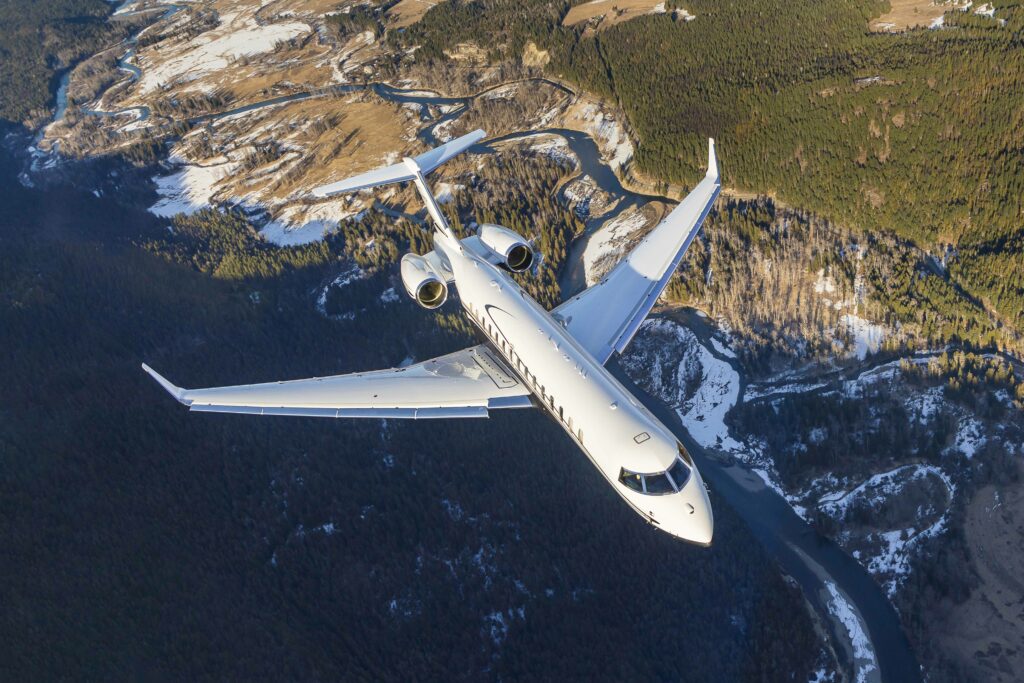
Skies: What do you hope to see in 2023 in terms of Bombardier’s orders and earnings performance?
E.M.: On Feb. 9, Bombardier proudly unveiled its financial results for the fourth quarter and for 2022 in its entirety. I’m very happy to say we met or exceeded our commitments across the board, be it on deliveries, aftermarket services, or profitability. We also made significant progress on reducing our debt. When it comes to 2023, I can tell you that we’re going to be very busy delivering jets! Bombardier now expects to deliver more than 138 units this year, representing an increase of 15 percent versus 2022 (excluding Learjet aircraft, which we no longer produce).
Our adjusted EBITDA grew 45 percent from $640 million in 2021 to $930 million in 2022. We continue to see margin expansion for 2023, with a guidance of greater than $1,125 million in adjusted EBITDA for 2023 — representing at least a 21 percent year-over-year increase. Given our outstanding product lineup, our expanded customer services network and, most of all, our amazing employees, Bombardier is well positioned to have another strong year.
Skies: How is Bombardier preparing for the transition to the new Global manufacturing center at Toronto Pearson airport?
E.M.: The transition to the new Global manufacturing site at Pearson is a project that is close to my heart, and preparations are going well. Toronto is key to Canada’s aviation industry, and Bombardier has made a home there for over 20 years, so we’re very pleased to be preparing for this next phase.
We are on track to begin the transition of our operations from Downsview to our new Pearson site in late summer 2023. This will be a gradual progress in order to keep our production lines moving; the move will be position by position following our production sequence. Our operations teams are more than capable of managing this move.
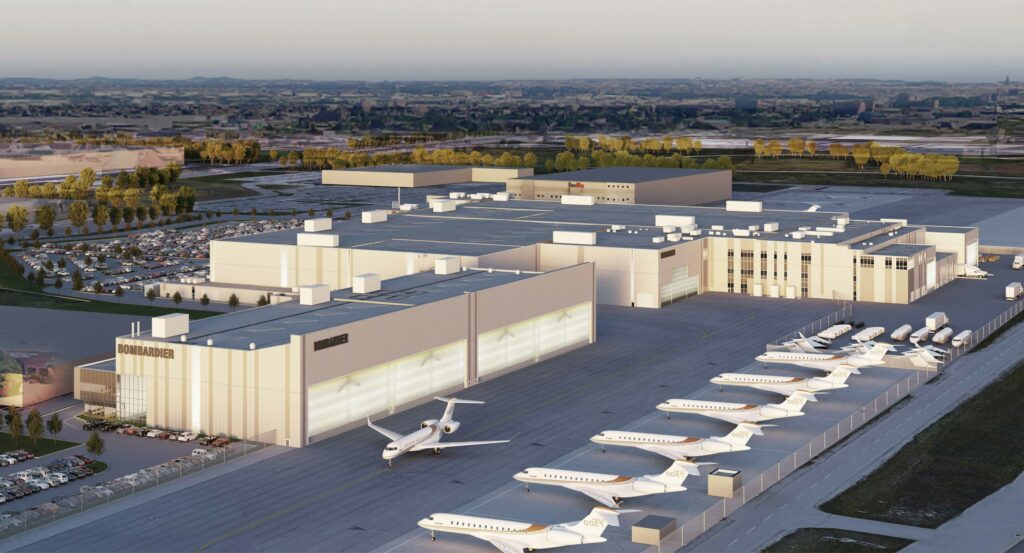
The Pearson site is where all of Bombardier’s flagship Global aircraft will be assembled. These are the best large-cabin, long-range business jets in the world.
Skies: The new facility will provide continued employment to the 2,000 Bombardier employees currently working at the Downsview facility. Do you foresee the need to create even more jobs in the near future?
E.M.: We’re actively recruiting in Ontario, in part to make sure we can backfill planned retirements seamlessly. Bombardier is such an exciting place for Canadian aerospace workers, and our new Pearson manufacturing facility was conceived with the well-being of our teams in mind; we’ve incorporated features such as increased natural light and EV charging stations.
From tooling plans to environmental conditions and workflow, every aspect has been reviewed and enhanced to help our employees feel at home when they arrive on their first day — as well as to attract the next generation of aerospace workers. We’re setting up to have a very successful site in the long term!
Skies: Will final assembly of the new Global 8000 aircraft take place at the new facility? And what has interest in the jet been like so far?
E.M.: Indeed, all of Bombardier’s Global aircraft are assembled in Ontario, and I’m proud to say that it will remain so when we transition from our Downsview site to our new Pearson site. The Global 8000 business jet — which was unveiled in 2022 and is expected to enter service in 2025 — represents the absolute pinnacle of business aviation. This aircraft is the evolution of our award-winning Global 7500 business jet, which is already the flagship of the industry.

The Global 8000 will fly farther and faster than any business jet before it. In fact, we revealed that one of our Global 8000 test aircraft broke the sound barrier in flight; this is all part of the validation process that will allow this new jet to fly at an incredible top speed of Mach 0.94. It’s an amazing achievement, and our Canadian employees played a key role in it. This aircraft is already generating a lot of buzz and interest in the market.
Skies: At the end of 2022, you released a statement calling for the Canadian Multi-Mission Aircraft (CMMA) tender to be open to a Canadian-built option like the Global 6500. Why do you feel that aircraft is well suited for the CMMA role?
E.M.: We at Bombardier firmly believe that our Canadian-built Global 6500 aircraft is an excellent option for the Canadian Multi-Mission Aircraft. The agile, state-of-the-art Global platform has proven endurance and reliability, and Global jets have been evaluated and chosen for special missions by the U.S. Air Force, as well as by the U.K., Germany, and Sweden, among others.
The Global 6500 aircraft’s next-generation engines and leading aerodynamic profile contribute to excellent operating costs and, more importantly, leave a lower carbon footprint. We hope that the CMMA will be open to diverse proposals, because we would be honored to present our made-in-Canada solution.
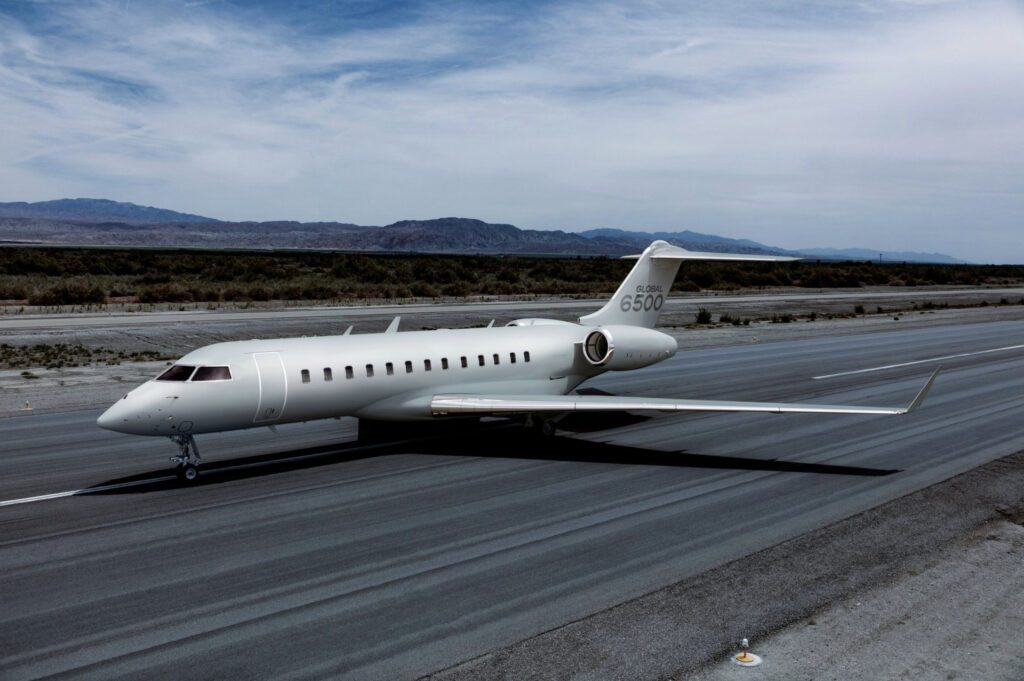
Skies: What would you say to Canadians who feel that a Canadian-built option could end up being more expensive than a foreign option?
E.M.: There is nothing to indicate at this point that a Canadian-built option would be more expensive. We haven’t reached the stage of a formal request for proposals (RFP), which I sincerely hope will materialize. We should keep in mind that business jets are less expensive to operate than commercial airliners, not to mention the reduced environmental footprint of a smaller aircraft. Moreover, a Canadian-built option for CMMA would be an investment in our Canadian workforce and would drive innovation within our borders.
Let’s be clear — Canadians earning salaries in Canada would be building the aircraft itself. This wouldn’t just be a case of economic offset agreements, the government would stimulate its national workforce directly by working through Bombardier. It’s evident that a healthy aerospace industry is good for Canada; an independent assessment by PwC Canada found that Bombardier contributed $5.7 billion to Canada’s GDP in 2021. That same year, Bombardier spent $1.9 billion on goods and services provided by suppliers across Canada.
Skies: Any final thoughts about Bombardier overall?
E.M.: These are truly exciting times at Bombardier, and I believe there’s never been a better time to join our ranks. Last year, we added close to one million square feet of new service capacity to our worldwide aftermarket network. Servicing our aircraft is one of the ways in which Bombardier is thriving, irrespective of the fluctuations in demand for new aircraft.
Bombardier’s focus on sustainability is also a key part of our strategy, and something that is extremely important to our employees. We recently unveiled our EcoJet research project — an important Canadian undertaking that is reimagining the shape of an aircraft in order to reduce fuel consumption by as much as 50 percent.
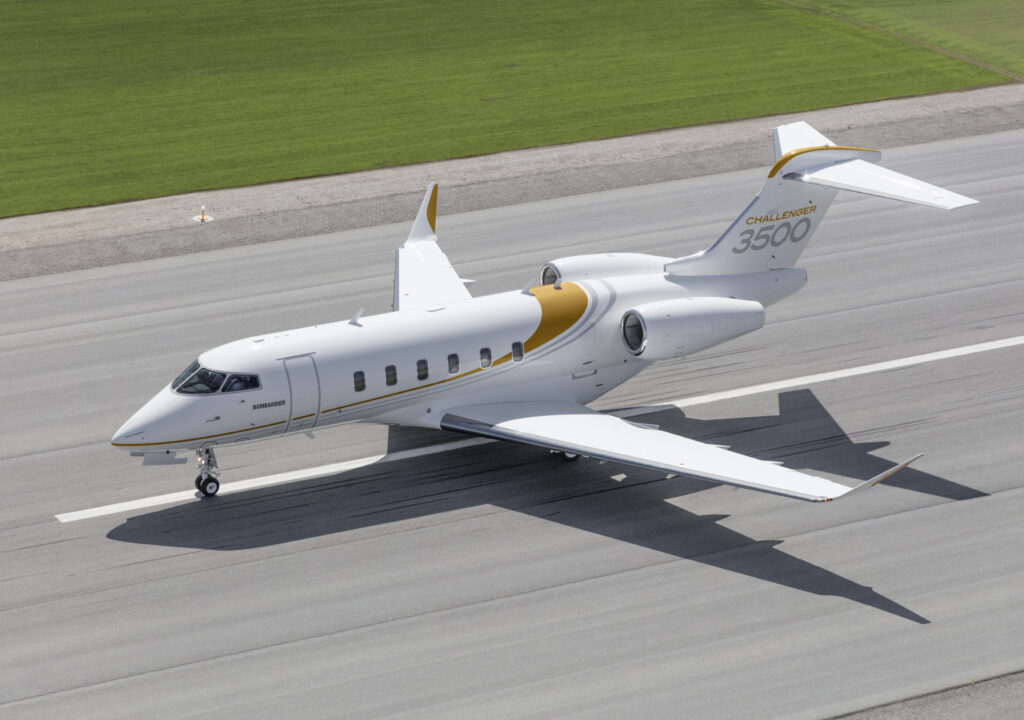
We also committed to covering the totality of our flight operations with sustainable aviation fuel via a book-and-claim model. Bombardier is taking a leadership role in building a more sustainable future for business aviation, and we want people to join us on this journey.
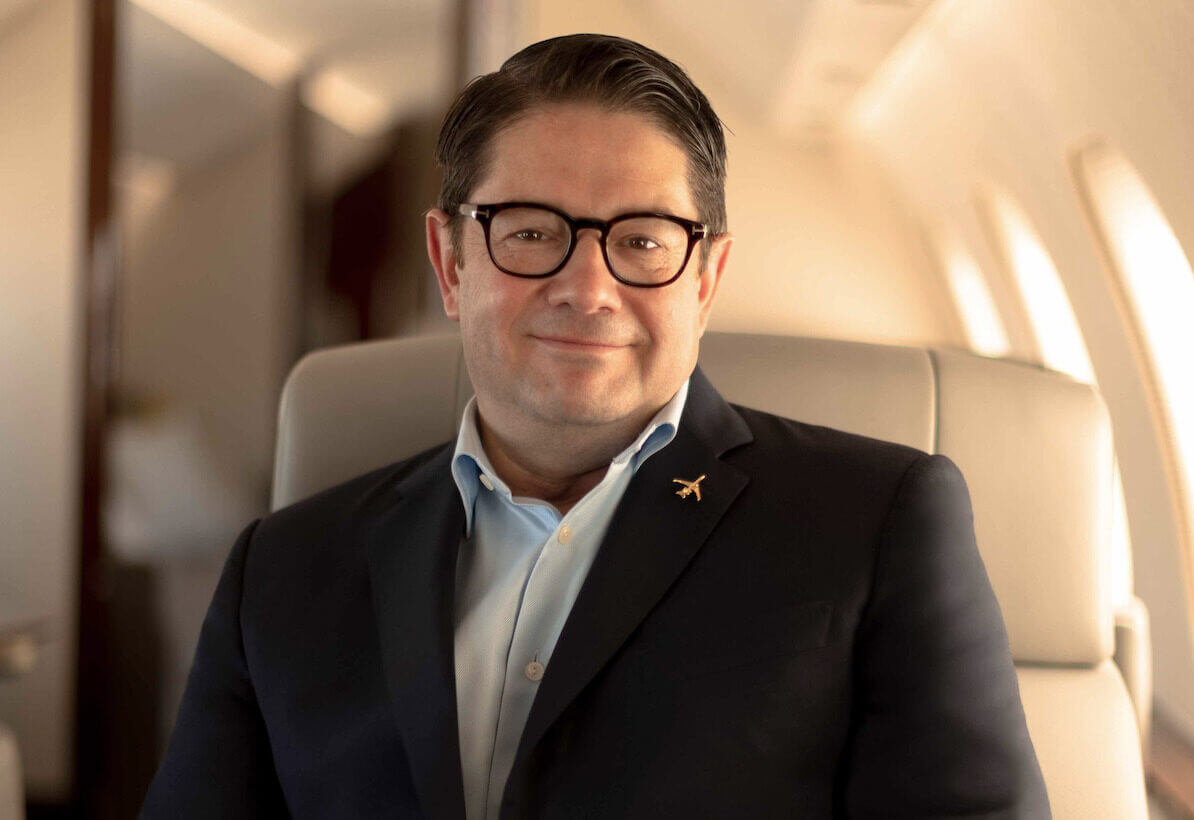

Looking for more government handouts as they always have.
When are they going to replace the 650? It first flew in 1978. It was at the end of its life 15 years ago
I used to own 154,000 shares of BBD.B but the reverse stock split reduced my holding to 6159 shares. I have been waiting some 15 years for my stock to show a profit; it has been hard on the nerves, especially when the stock went to .29 cents before the split. Bombardier has met several obstacles including labor problems, the pandemic and most notably the stab in the back from Boeing when it tried to block the C-Series from being sold in the U.S.A. It is inconceivable that now Ottawa will deal only with Boeing regarding military aircraft ! Now there are more headwinds from bond holders regarding the sale of other former Bombardier holdings like rail and commercial aircraft; hopefully that will be resolved without having to “sell the farm”. I hope that Mr. Martel is the one who will finally bring stability and profit to Bombardier. I am in my 88th year and hopefully I will see Bombardier pay a dividend before my number comes up !
Nous pouvons être fiers de Bombardier, fleuron de l’industrie québécoise. Espérons que la défense nationale canadienne considérera l’offre de Bombardier ce qui lui permettra certainement une certaine stabilité.
Bombardier is one of the best company in Canada that I have worked for they treat there workers with respect and dignity and they have all the safety regulations and system in force and the worker’s has the chance to go further in the company and it’s one of the best paid company lucky I retired last year I feel like going back to work for them and train the new commers for this company luv bombardier all his staff and worker’s
Getting an inferior aircraft that can do a fraction of the job with poorer prospects for long-term parts availability sounds about as Canadian as it gets.
With any luck Martel will delay the Canadian adoption of the P8 by years and cost Canadian taxpayers many millions—or maybe even billions—of dollars.
The idea of Bombardier supplying the RCAF this aircraft is not one that anybody takes seriously.
This is obstructionism that for Bombardier is low-cost but for the RCAF is high-stakes.